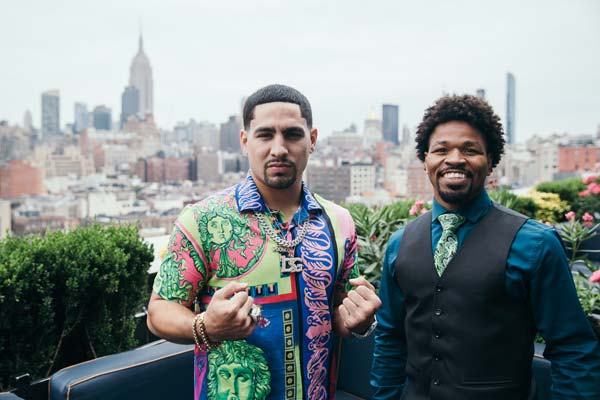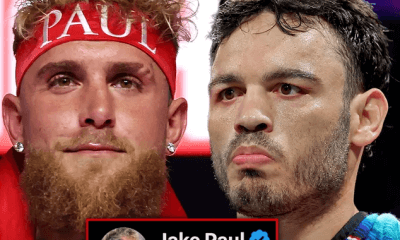Featured Articles
Execution Will Decide Porter-Garcia More Than Style
During the next two weeks there will be two high profile bouts in which the style contrast between the fighters couldn’t be more discernible

During the next two weeks there will be two high profile bouts in which the style contrast between the fighters couldn’t be more discernible. I’m speaking of this weekend’s WBC welterweight title bout between former titlists Shawn Porter and Danny Garcia, followed by the Canelo-Golovkin middleweight title rematch on September 15th. Both clashes feature a counter-puncher (Garcia & Canelo) versus a swarmer/attacker (Porter & Golovkin). And although most observers consider the counter-puncher holding the stylistic advantage, that is not necessarily true.
One of the biggest fights over the last 50 years that featured a premier swarmer and a premier counter-puncher was the first encounter between heavyweights Joe Frazier and Jerry Quarry back in June of 1969. Prior to the fight momentum was gaining in the media suggesting Quarry had the right style to befuddle Frazier and neutralize his aggression. But those that held this opinion were wrong. Jerry had the better of Joe in the first and most of the second round, but starting in the third Frazier’s aggression and his volume punching, along with him smothering Quarry’s room to get off freely, left nothing and no time for Jerry to counter. Instead he was rushing his shots trying to occupy Frazier and in doing that he couldn’t get everything on them and that enabled Joe to dictate the pace and ring geography of the bout. The Garcia-Porter clash on paper has some similarities to Frazier-Quarry I although the Frazier-Porter comparison is imperfect being that Joe was a more polished and effective attacker with a bigger pound-for-pound punch than Porter.
The fighter capable of executing his style best due to his greater ability to stay within himself will go a long way in deciding the outcome of Porter-Garcia on September 8th at the Barclays Center in Brooklyn.
Porter 28-2-1 (17) is one of the better conditioned fighters in boxing and that’s a necessity due to the way he fights. He’s only lost to the best of the best in the welterweight division, dropping close decisions to title holders Kell Brook and Keith Thurman. Porter is the quintessential attacker, in that he really tries not to give his opponents any room or time to do anything but retreat or defend. The problem is sometimes he gets in so tight he becomes easy to tie up and blunts his own offense. Against Garcia, Porter, instead of attacking in waves, would be best suited by applying Frazier-type bell-to-bell constant pressure, and that hasn’t been his strength. Shawn is either on you like a wet t-shirt or lying in wait for his chance to attack like a mountain lion. I’ve seen it said that Porter has a better jab than Garcia, but that isn’t set in stone. And Garcia isn’t the least bit concerned with Shawn’s jab because he knows it’s basically just a distraction to clear a path for Porter’s right hand and looping hooks that he throws from both sides.
Danny Garcia 34-1 (20), like Porter, is always in shape and has fought some of the best fighters in between 140-147. His only loss was to Keith Thurman. He has a few slight advantages over Porter, but to beat him he may have to be on his game even more than Shawn. Garcia is the more restrained fighter and seldom breaks his shell regarding who he is stylistically, but he is also smart enough to know when it’s imperative that he change things up to salvage a fight that’s hanging in the balance. Danny also has sound fundamentals and is best when he counters and picks his spots. He’s better defensively than Porter and is the more accurate puncher who relies more on timing. He’ll cede physical strength to Porter but he’ll try to use that against him and will rely on his solid chin when he miscalculates.
When it comes to who is the more versatile fighter of the two, it’s clearly Garcia. However, in this pairing that won’t matter one bit because Porter is going to force Garcia to retreat or fight it out with him, with no other option. And it would be a huge surprise if he didn’t.
Danny knows Shawn has no choice but to bring the heat because Porter can’t win fighting at ring center or fighting in retreat and also that’s not who he is. Porter is going to attack, swing for the fence with every punch to the head and body and hit anywhere he sees an opening or thinks he can create one. In this fight Porter is going to need to be the ultimate swarmer. And by that I mean his pressure and volume punching must be done at a pace that doesn’t afford Garcia the time to cover and counter and he must keep Danny fighting under duress for most of the round, and sustain that for all twelve rounds because this one most likely goes the distance.
With Garcia knowing Porter is going to be on the attack, he has a few decisions to make once he’s in there and has a better idea on how he measures up with Porter physically. The crucial thing will be the read Garcia gets when he feels Porter’s power. Shawn is strong but he’s not a guy that has single-shot fight-altering power, and if Danny feels he can live with anything Porter lands, he’ll take more chances and try to blunt his aggression. And if by chance he can get Porter to slow down in his trek to get inside, then Garcia can change things up and won’t be punching out of urgency. The other option Garcia has is the tactic in which he gives the anticipated ground that Porter is going to look to take and then counters him between his shots. Once inside, Porter is open up the middle because he tends to load up and punches wide with his head down, leaving him vulnerable to Garcia’s uppercut.
Like most fights at the highest level in boxing, especially when it doesn’t appear that either guy has guns big enough to get the other out, it’ll come down to who executes best and who’s scoring it. Porter is a worker and often looks like he’s doing more damage than he actually is, so the judges may give him credit for aggression even though he might not be terribly effective as far as landing clean and crisply.
If there ever was a 50-50 fight it’s Garcia vs. Porter this weekend. They have contrasting styles and the edge the stronger fighter has is evened out by the other being a better technician who is less likely to stray from who he is. This one may really come down to which of the two is more composed under fire along with who has the most big moments because it’s doubtful either one can sustain bettering the other for a majority of the fight.
Porter no doubt believes he can blast his way past Garcia. Danny, in turn, sees Porter as being made for him stylistically and is confident he’ll be able to use Porter’s aggression against him. And that’s not such a huge reach and the onus is on Porter to disrupt that.
Earlier this week Garcia said something that I really think is a window into his mindset. “If you’re throwing, it’s got to be effective,” he said. “Volume punches aren’t always effective. I’m the sharper boxer, cleaner puncher. That’s my style, and I throw a lot of punches too. I throw more than 600 punches a fight. That’s a lot.” In a very subtle way Garcia said that he sees Porter as a reckless attacker who misses a lot of punches and will be right in front of him to counter, and if he has to pick it up and initiate the action, he’s good.
Porter needs to do what Frazier did against Quarry, and that’s make Garcia fight bell-to-bell with a sense of urgency and when he slows from the pace and needs a breather, make him pay for not offering the resistance he did when he was fresh. On the other hand, Garcia has to do what Quarry couldn’t, and that’s give Porter a reason to impede his aggression and then capitalize with his greater accuracy and hand-speed when Shawn starts to wind down.
It’s impossible to say with impunity the counter-puncher holds the edge over the swarmer or vice versa. If Porter is an elite attacker, Garcia shouldn’t have anything to counter because he’ll be fighting with the purpose of just trying to tread water to keep from drowning in order to stay in the fight. But if Garcia can take advantage of his quicker and more accurate hands, that could be enough to impede Shawn’s aggression, and if Garcia can do that, he wins.
Garcia has always kind of gotten the advantage in decisions, and Porter tends to be kind of a hard luck fighter, so my inclination is Garcia edges out the win by decision.
Frank Lotierzo can be contacted at GlovedFist@Gmail.com
Check out more boxing news on video at The Boxing Channel
To comment on this article at The Fight Forum, CLICK HERE.
-

 Featured Articles4 weeks ago
Featured Articles4 weeks agoAvila Perspective, Chap. 330: Matchroom in New York plus the Latest on Canelo-Crawford
-

 Featured Articles3 weeks ago
Featured Articles3 weeks agoVito Mielnicki Jr Whitewashes Kamil Gardzielik Before the Home Folks in Newark
-

 Featured Articles19 hours ago
Featured Articles19 hours agoResults and Recaps from New York Where Taylor Edged Serrano Once Again
-

 Featured Articles4 weeks ago
Featured Articles4 weeks agoCatching Up with Clay Moyle Who Talks About His Massive Collection of Boxing Books
-

 Featured Articles5 days ago
Featured Articles5 days agoFrom a Sympathetic Figure to a Pariah: The Travails of Julio Cesar Chavez Jr
-

 Featured Articles3 weeks ago
Featured Articles3 weeks agoMore Medals for Hawaii’s Patricio Family at the USA Boxing Summer Festival
-

 Featured Articles1 week ago
Featured Articles1 week agoCatterall vs Eubank Ends Prematurely; Catterall Wins a Technical Decision
-

 Featured Articles4 weeks ago
Featured Articles4 weeks agoRichardson Hitchins Batters and Stops George Kambosos at Madison Square Garden




















